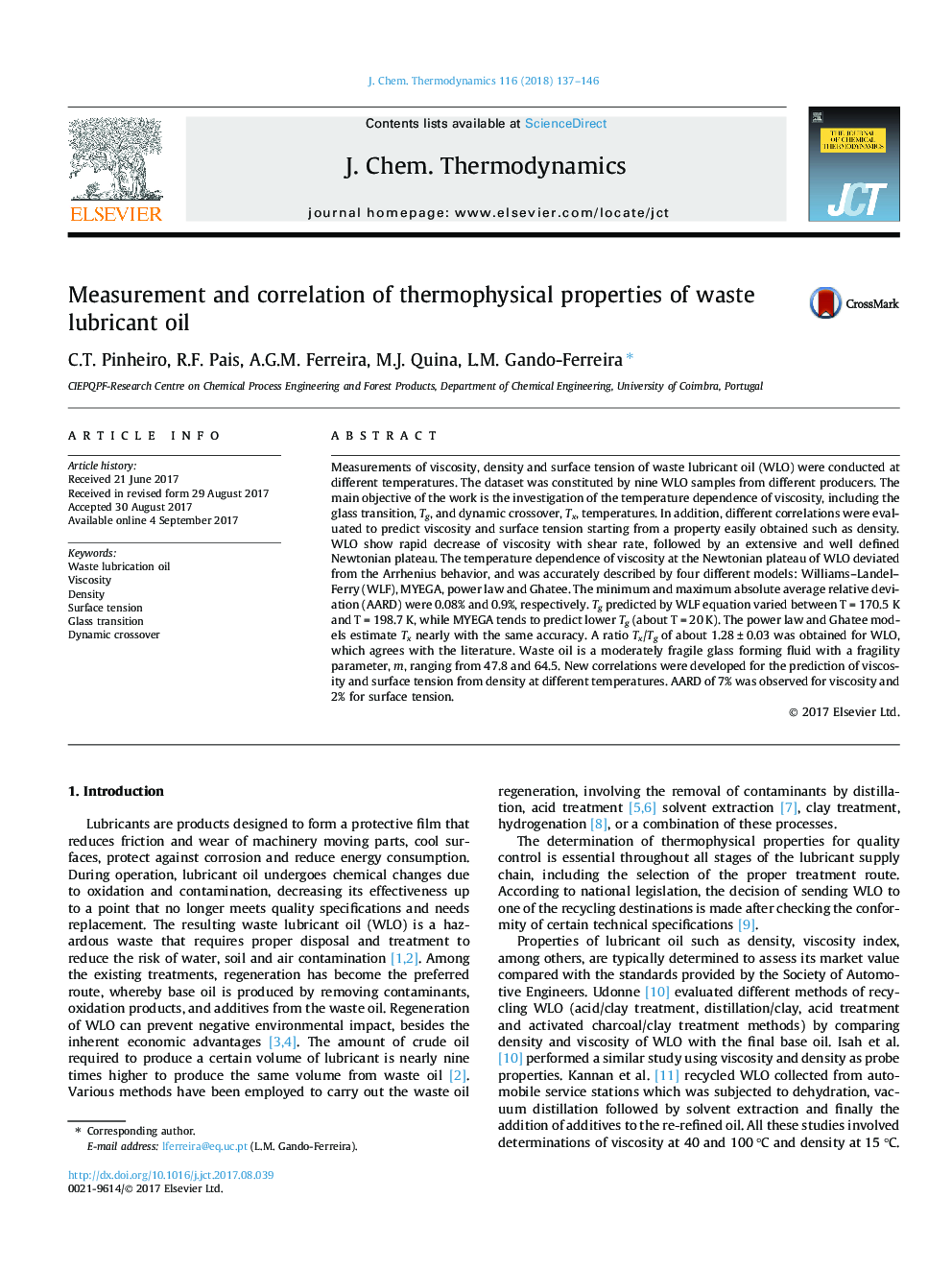| کد مقاله | کد نشریه | سال انتشار | مقاله انگلیسی | نسخه تمام متن |
|---|---|---|---|---|
| 4907208 | 1426197 | 2018 | 10 صفحه PDF | دانلود رایگان |
- Waste lubricant oil is a glass forming liquid deviating from the Arrhenius behavior.
- WLF and MYEGA models are used to predict the glass transition temperature.
- Power law and Ghatee equations estimate the crossover temperature.
- Correlations between viscosity/density and density/surface tension are proposed.
Measurements of viscosity, density and surface tension of waste lubricant oil (WLO) were conducted at different temperatures. The dataset was constituted by nine WLO samples from different producers. The main objective of the work is the investigation of the temperature dependence of viscosity, including the glass transition, Tg, and dynamic crossover, Tx, temperatures. In addition, different correlations were evaluated to predict viscosity and surface tension starting from a property easily obtained such as density. WLO show rapid decrease of viscosity with shear rate, followed by an extensive and well defined Newtonian plateau. The temperature dependence of viscosity at the Newtonian plateau of WLO deviated from the Arrhenius behavior, and was accurately described by four different models: Williams-Landel-Ferry (WLF), MYEGA, power law and Ghatee. The minimum and maximum absolute average relative deviation (AARD) were 0.08% and 0.9%, respectively. Tg predicted by WLF equation varied between T = 170.5 K and T = 198.7 K, while MYEGA tends to predict lower Tg (about T = 20 K). The power law and Ghatee models estimate Tx nearly with the same accuracy. A ratio Tx/Tg of about 1.28 ± 0.03 was obtained for WLO, which agrees with the literature. Waste oil is a moderately fragile glass forming fluid with a fragility parameter, m, ranging from 47.8 and 64.5. New correlations were developed for the prediction of viscosity and surface tension from density at different temperatures. AARD of 7% was observed for viscosity and 2% for surface tension.
Journal: The Journal of Chemical Thermodynamics - Volume 116, January 2018, Pages 137-146
